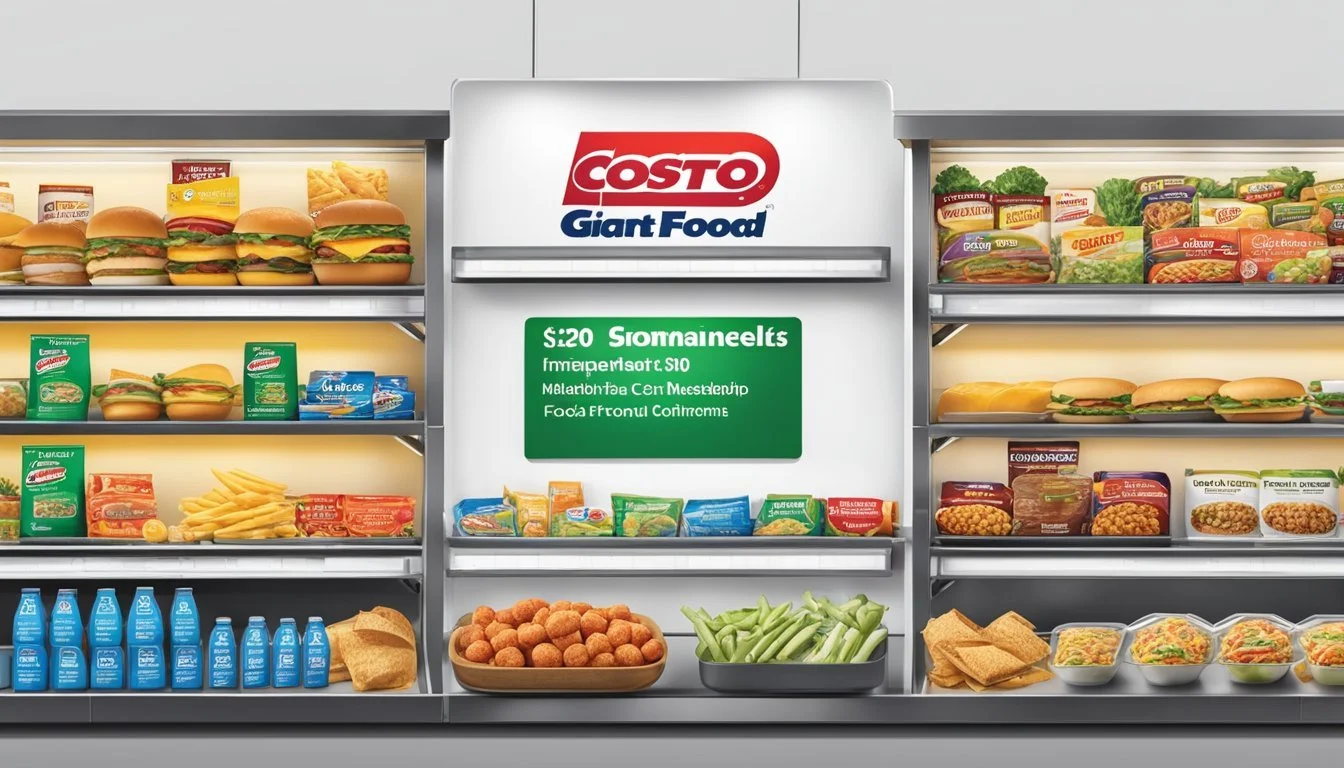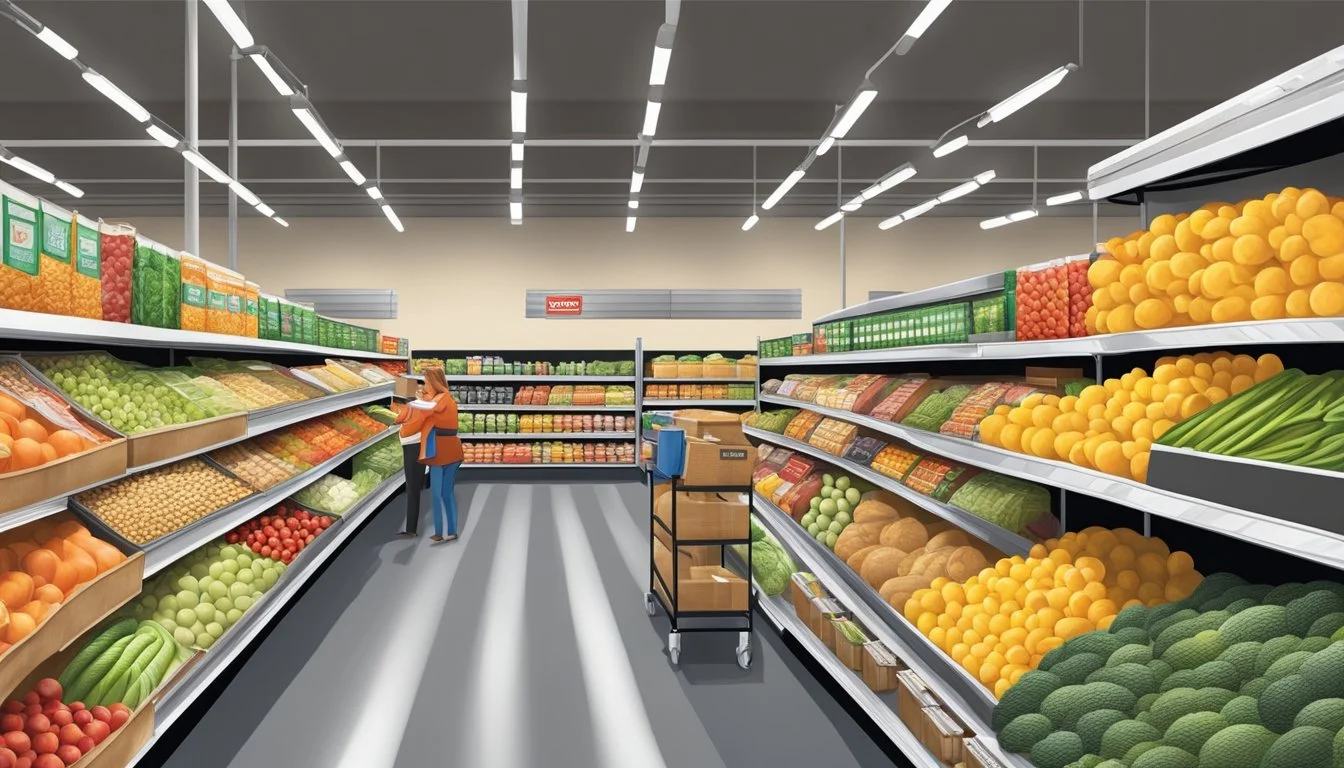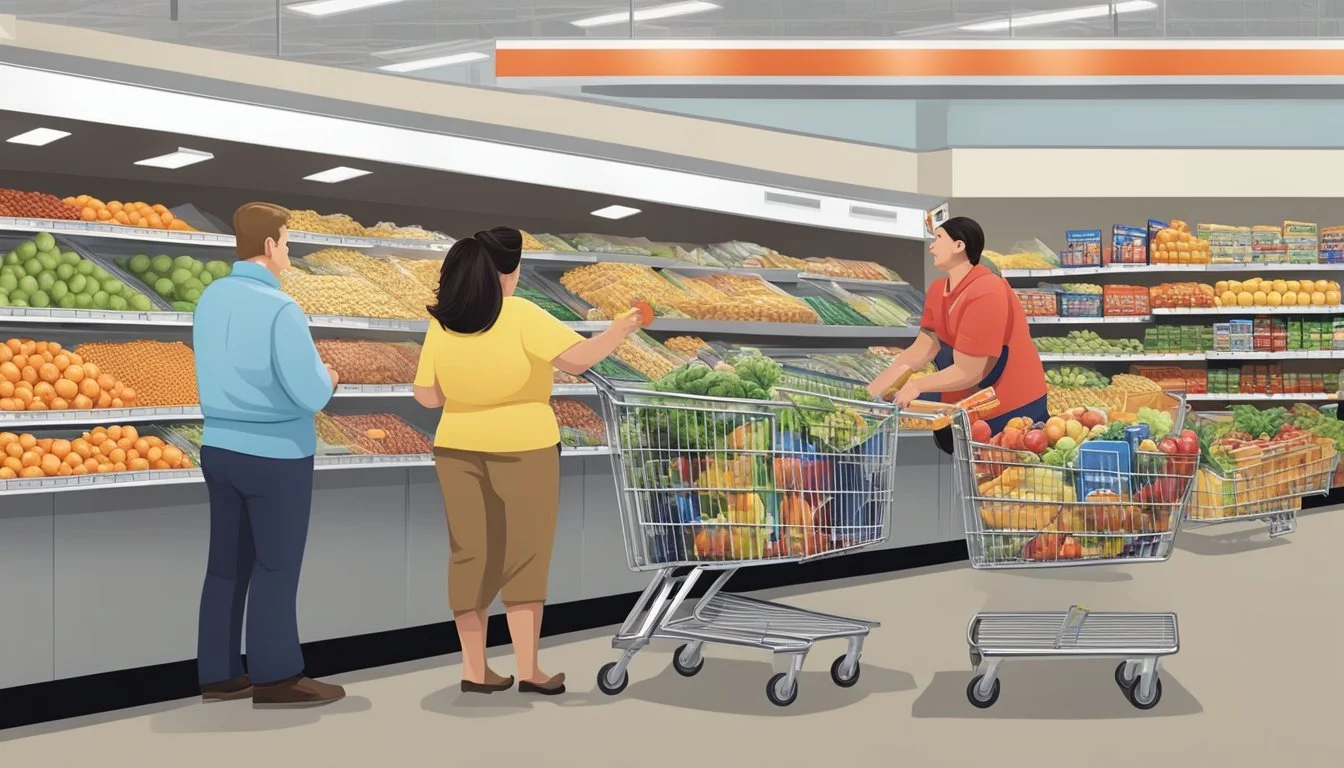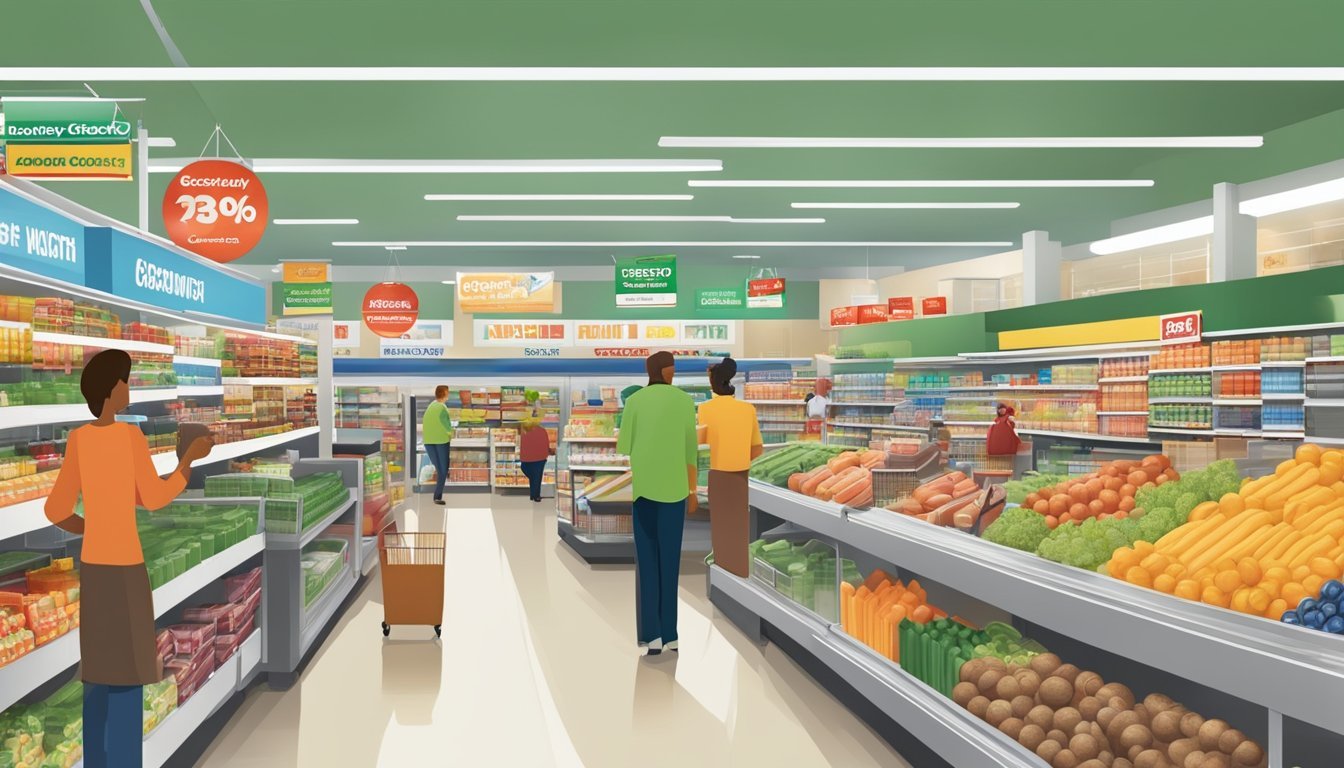Costco vs Giant Food
A Comparative Analysis of Price, Quality, and Selection
When it comes to grocery shopping, choosing the right store can significantly impact your budget and overall experience. Costco and Giant Food are two popular options that cater to different shopping preferences and needs.
Costco offers bulk purchases at competitive prices, while Giant Food provides a more traditional grocery store experience with a wider variety of everyday items. Costco's membership-based model appeals to those who prefer to buy in large quantities and stock up on essentials. Giant Food, on the other hand, attracts shoppers looking for a convenient, full-service supermarket with a broader selection of fresh produce, meats, and specialty items.
Both stores have their strengths and weaknesses. Costco excels in offering high-quality products at discounted rates, particularly for non-perishable goods and household items. Giant Food shines in its accessibility, frequent promotions, and ability to accommodate smaller households or those who prefer to shop more frequently for fresh ingredients.
Company Overview
Costco and Giant Food have distinct histories and business models that have shaped their positions in the grocery industry. Both companies have evolved over decades to become major players in their respective market segments.
History of Costco
Costco's journey began in 1976 when Sol Price founded Price Club in San Diego. In 1983, James Sinegal and Jeffrey Brotman opened the first Costco warehouse in Seattle. The two companies merged in 1993 to form Price/Costco, later simplified to Costco Wholesale Corporation in 1997.
Costco pioneered the membership warehouse model, offering bulk quantities at discounted prices. The company introduced its Kirkland Signature private label in 1995, which has become a cornerstone of its business strategy.
Today, Costco operates hundreds of warehouse locations across the United States and internationally. Its no-frills approach and focus on high-quality products at competitive prices have earned it a loyal customer base.
History of Giant Food
Giant Food's roots trace back to 1936 when N.M. Cohen and Sam Lehrman opened a small grocery store in Washington, D.C. The company expanded rapidly in the post-World War II era, introducing innovative concepts like the combination food and pharmacy store.
In 1998, Dutch company Royal Ahold acquired Giant Food, integrating it into its network of U.S. supermarket chains. Giant Food has since focused on modernizing its stores and expanding its product offerings to meet changing consumer demands.
Giant Food operates primarily in the Mid-Atlantic region, with a strong presence in Maryland, Virginia, and Washington, D.C. The company has adapted its business model over time, emphasizing fresh produce, prepared foods, and digital shopping options to compete in the evolving grocery landscape.
Membership and Pricing Structure
Costco and Giant Food employ distinct approaches to pricing and membership. These differences significantly impact the shopping experience and potential savings for customers.
Costco Membership Tiers
Costco offers two primary membership options: Gold Star and Executive. Gold Star membership costs $60 annually and grants access to all Costco warehouses worldwide. It includes a free household card for a spouse or domestic partner.
Executive membership, priced at $120 per year, provides additional benefits:
2% cashback reward on eligible Costco purchases (up to $1,000 annually)
Extra discounts on Costco services
Exclusive offers and early access to select products
Both tiers allow members to shop at Costco.com and enjoy bulk pricing on a wide range of products. The membership fee is often offset by potential savings on bulk purchases and discounted items.
Giant Food Pricing Strategy
Giant Food does not require a membership to shop at its stores. The chain focuses on competitive pricing and various discount programs to attract customers.
Key elements of Giant Food's pricing strategy include:
Weekly sales and promotions
Digital coupons accessible through their mobile app
Gas rewards program offering fuel discounts based on grocery purchases
Store brand products at lower price points
Giant Food also provides a loyalty program called Giant Flexible Rewards. Members earn points on purchases, which can be redeemed for grocery discounts, gas savings, or donations to local schools.
The absence of a membership fee allows customers to shop without upfront costs, making Giant Food accessible to a broader range of shoppers.
Range of Products
Costco and Giant Food offer diverse product selections to meet varying customer needs. Both stores stock essential grocery items but differ in their assortment and focus.
Costco's Product Lines
Costco's product range emphasizes bulk purchases and its Kirkland Signature private label. The store carries a wide selection of fresh produce, meats, and dairy products in larger quantities. Kirkland Signature items span various categories, from food to household goods, often at competitive prices.
Costco's fresh food section includes high-quality fruits, vegetables, and baked goods. The store also offers an extensive array of frozen foods and pantry staples. Beyond groceries, Costco stocks electronics, apparel, and home goods.
National brands are available, but the selection is more limited compared to traditional supermarkets. Costco focuses on popular items and rotates seasonal products regularly.
Giant Food's Product Assortment
Giant Food provides a more traditional grocery store experience with a broader range of brands and package sizes. The store offers an extensive selection of fresh produce, meats, and dairy products in standard quantities suitable for everyday shopping.
Giant Food carries numerous national brands alongside its own private label products. The store's bakery, deli, and prepared foods sections cater to customers seeking quick meal solutions.
Specialty items, organic options, and international foods are well-represented at Giant Food. The store also stocks health and beauty products, pet supplies, and basic household goods.
Giant Food's product assortment is designed for regular, smaller shopping trips, with a focus on variety and convenience.
Quality of Goods
Costco and Giant Food both offer a range of products, but their quality standards and sourcing practices differ. Consumer ratings and independent evaluations provide insights into the freshness, taste, and overall value of their goods.
Assessing Costco's Quality
Costco's Kirkland Signature brand has garnered praise for its high quality and competitive pricing. The company's bulk purchasing power allows it to source premium products at lower costs. Costco's meat department is known for its USDA Choice and Prime cuts, often surpassing the quality found in traditional supermarkets.
Fresh produce at Costco tends to be of good quality, though the large package sizes may not suit all shoppers. The store's organic offerings have expanded in recent years, meeting growing consumer demand for pesticide-free options.
Consumer Reports surveys consistently rank Costco highly for overall quality. The store's strict quality control measures and return policy contribute to customer satisfaction.
Evaluating Giant Food's Offerings
Giant Food focuses on providing a wide variety of products to cater to diverse customer needs. Their produce section typically offers a mix of conventional and organic options, with an emphasis on locally sourced items when possible.
The chain's store brands, including Nature's Promise organic line, aim to provide quality alternatives to national brands. Giant Food's meat department offers standard cuts, with some locations featuring higher-end selections.
Consumer ratings for Giant Food's quality tend to be average to above-average. The store's commitment to freshness is evident in their regular product rotations and in-store prepared foods sections.
Giant Food has implemented quality assurance programs to maintain consistency across their stores. However, product quality can vary between locations due to differences in management and local supply chains.
Shopping Experience
Costco and Giant Food offer distinct shopping environments tailored to different consumer needs. The layout, customer service, and overall atmosphere shape how customers navigate and interact within each store.
Navigating Costco's Layout
Costco's warehouse-style layout features wide aisles and bulk displays. Products are often stacked on pallets or industrial shelving units. This no-frills approach keeps costs down but requires shoppers to search for items. Costco's layout changes frequently, encouraging customers to explore new products.
The store emphasizes bulk buying, with large package sizes dominating the inventory. This can be beneficial for families or businesses but may not suit all shoppers. Costco's return policy is notably generous, allowing returns on most items without time limits.
Customer service at Costco is generally helpful, with staff available to assist with large items or product inquiries. The store maintains a clean environment despite its warehouse setting.
Shopping at Giant Food
Giant Food stores feature a more traditional grocery layout. Aisles are clearly marked, making it easier for shoppers to find specific items quickly. The produce section is typically near the entrance, followed by departments like deli, bakery, and meats.
Giant Food caters to a variety of shopping habits, offering both regular and bulk sizes of products. This flexibility appeals to different household needs. The stores are usually well-lit and clean, creating a comfortable shopping atmosphere.
Customer service at Giant Food is often personalized, with staff members available throughout the store. Many locations offer self-checkout options for quick trips. Giant Food's return policy is standard for supermarkets, typically allowing returns within a reasonable timeframe with a receipt.
Comparative Analysis
Costco and Giant Food employ distinct strategies in pricing, product selection, and customer rewards. These key differences impact the overall shopping experience and value proposition for consumers.
Price Comparison Metrics
Costco's bulk-buying model often results in lower unit prices compared to Giant Food. A cost-per-unit analysis typically favors Costco, especially for non-perishable items and household goods. For example, Costco's large packs of toilet paper can cost up to 50% less per sheet than comparable products at Giant Food.
Giant Food, however, may offer better prices on smaller quantities, which can be advantageous for those with limited storage space or who prefer to buy less at a time. Weekly sales and promotions at Giant Food can sometimes beat Costco's everyday low prices on specific items.
Brand Variety and Exclusive Products
Costco carries a more limited selection of brands but offers larger package sizes. Their Kirkland Signature private label is renowned for high quality at competitive prices. Kirkland products span various categories, from groceries to clothing and electronics.
Giant Food provides a wider variety of national brands and package sizes. They also offer their own private label, Giant, which competes with national brands on price. Giant Food's selection caters to diverse preferences and dietary needs, with a broader range of specialty and international products.
Membership Perks and Rewards
Costco requires a paid membership, which grants access to all warehouse locations and online shopping. Members receive additional benefits like discounts on Costco services, travel deals, and cash back rewards on certain credit cards.
Giant Food doesn't require a membership fee. Their free loyalty program, Giant Flexible Rewards, allows customers to earn points on purchases. These points can be redeemed for gas savings, grocery discounts, or free products. Giant Food also offers digital coupons and personalized deals through their app.
Additional Services and Benefits
Costco and Giant Food offer unique perks beyond groceries. Their additional services cater to different customer needs and provide value-added benefits to members and shoppers.
Costco's Gas Stations and More
Costco operates gas stations at many locations, offering competitive fuel prices to members. These stations often have lower costs per gallon compared to nearby competitors. Costco also provides a tire center service, where members can purchase and install tires at discounted rates.
The warehouse club's optical services include eye exams and prescription eyewear at reduced prices. Members can take advantage of bulk deals on household supplies, saving money on large quantities of cleaning products, paper goods, and personal care items.
Costco's additional services extend to travel planning, auto buying programs, and insurance options. These offerings aim to provide comprehensive solutions for members' diverse needs.
Giant Food's Community Programs
Giant Food focuses on community involvement through various initiatives. The supermarket chain runs local promotions and supports neighborhood events, fostering strong ties with customers.
Giant's pharmacy services include prescription refills, immunizations, and health screenings. Many locations offer online ordering with curbside pickup or home delivery, enhancing accessibility for shoppers.
The company participates in food donation programs, partnering with local food banks to reduce waste and support those in need. Giant Food also promotes healthy eating through educational programs and in-store nutritional guidance.
Loyalty programs and digital coupons provide additional savings opportunities for regular shoppers. These initiatives aim to reward customer loyalty while offering practical benefits to the community.
Economic Impact and Market Trends
Economic shifts and consumer preferences shape the grocery landscape. Both Costco and Giant Food adapt their strategies to meet changing demands and stay competitive.
The Influence of Consumer Trends
Inflation has driven shoppers to seek value. Costco's low-price model attracts budget-conscious consumers looking to stretch their dollars. The warehouse club has seen increased demand for groceries and discretionary items.
Giant Food responds by expanding its private label offerings. These store brands provide affordable alternatives to national brands without sacrificing quality.
Organic and sustainable products continue to gain popularity. Both retailers have expanded their selections to meet this growing consumer preference. Costco has invested in organic produce and environmentally-friendly packaging options.
Responding to Market Demands
Seasonal shopping habits impact inventory decisions. Costco adjusts its product mix to reflect holiday trends and summer barbecue needs. Giant Food leverages its smaller format to quickly rotate stock based on local preferences.
E-commerce growth has pushed both retailers to enhance their digital presence. Costco has improved its online ordering and delivery options. Giant Food has integrated digital coupons and personalized deals into its mobile app.
Economic uncertainty has led to increased competition. Walmart and Amazon have intensified efforts in the grocery space, challenging both Costco and Giant Food to innovate and differentiate their offerings.
Conclusion
Costco and Giant Food offer distinct shopping experiences tailored to different consumer needs. Costco excels in bulk purchases and exclusive member benefits, often providing lower per-unit costs on many items.
Giant Food shines with its wider selection of everyday groceries and more frequent sales. Its conventional store layout may be more familiar and convenient for some shoppers.
Price-conscious consumers may find Costco's membership fees offset by significant savings on bulk items and fuel discounts. Giant Food's loyalty program offers its own rewards without an upfront cost.
The shopping experience differs markedly between the two. Costco's warehouse format contrasts with Giant Food's traditional grocery store layout. This impacts product variety and convenience.
Ultimately, the better choice depends on individual shopping habits, household size, and storage capacity. Costco suits larger families or those able to store bulk items. Giant Food may be preferable for smaller households or frequent shoppers.
Both stores have their strengths, and many consumers find value in utilizing both options to maximize savings and selection.










